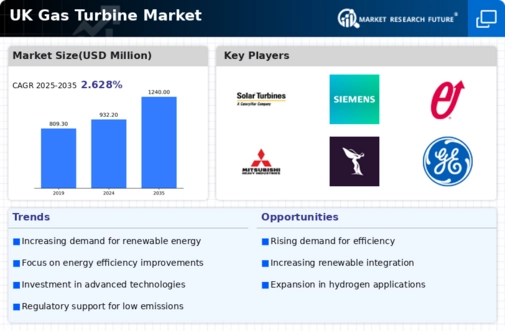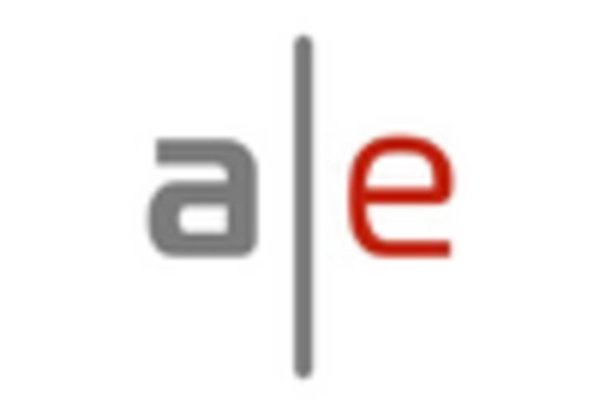Increasing Demand for Energy Efficiency
The gas turbine market in the UK is experiencing a notable surge in demand for energy-efficient solutions. As industries strive to reduce operational costs and carbon footprints, gas turbines are increasingly viewed as a viable option. The UK government has set ambitious targets to cut greenhouse gas emissions by 68% by 2030, which is likely to drive investments in cleaner technologies. Gas turbines, known for their high efficiency and lower emissions compared to traditional coal-fired plants, are expected to play a pivotal role in achieving these targets. The market is projected to grow at a CAGR of approximately 4.5% from 2025 to 2030, reflecting the increasing preference for energy-efficient systems in various sectors, including power generation and industrial applications.
Investment in Infrastructure Development
The gas turbine market is poised to benefit from substantial investments in infrastructure development across the UK. The government has committed to enhancing energy infrastructure, which includes upgrading existing power plants and constructing new facilities. This investment is anticipated to exceed £20 billion over the next decade, focusing on modernizing energy generation capabilities. Gas turbines are integral to this strategy, as they provide flexible and reliable power generation solutions. The emphasis on building resilient energy systems to support economic growth and energy security is likely to bolster the gas turbine market. Furthermore, the integration of advanced technologies in new installations may enhance operational efficiency and reduce maintenance costs, further driving market growth.
Rising Focus on Clean Energy Technologies
The gas turbine market is increasingly influenced by the rising focus on clean energy technologies in the UK. With the government prioritizing the transition to a low-carbon economy, investments in cleaner gas turbine technologies are expected to rise. The market is projected to reach approximately £5 billion by 2027, driven by innovations in turbine design and materials that enhance efficiency and reduce emissions. The development of hydrogen-ready gas turbines is particularly noteworthy, as it aligns with the UK’s hydrogen strategy aimed at achieving net-zero emissions by 2050. This focus on clean technologies not only supports environmental goals but also positions the gas turbine market as a key player in the future energy landscape.
Shift Towards Decentralized Energy Systems
The gas turbine market is witnessing a shift towards decentralized energy systems in the UK. This trend is driven by the increasing need for energy security and reliability, particularly in urban areas. Gas turbines offer a compact and efficient solution for distributed generation, allowing for localized power production. The UK government has been promoting initiatives to support decentralized energy solutions, which could lead to a market expansion of around 15% by 2030. This shift not only enhances energy resilience but also aligns with the broader goals of reducing transmission losses and improving grid stability. As businesses and communities seek to harness local energy resources, the gas turbine market is likely to see increased adoption in various applications, including combined heat and power (CHP) systems.
Technological Innovations in Turbine Design
The gas turbine market is benefiting from ongoing technological innovations in turbine design and performance. Advances in materials science and engineering are leading to the development of more efficient and durable turbines. The introduction of advanced cooling techniques and aerodynamic improvements is enhancing the operational efficiency of gas turbines, which is crucial for meeting the increasing energy demands in the UK. The market is expected to grow by approximately 6% annually as manufacturers invest in research and development to create next-generation turbines. These innovations not only improve performance but also reduce emissions, making gas turbines a more attractive option for power generation. As the industry evolves, the emphasis on cutting-edge technology is likely to drive further growth in the gas turbine market.

















Leave a Comment